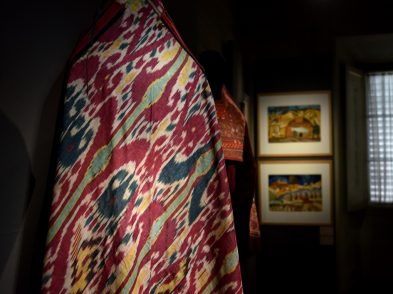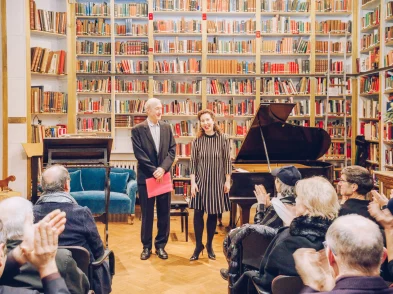I was nervous before
interviewing writer and artist Gabriella Kuruvilla: she speaks no English; I
speak no Italian. Because we would both rely on translators to relay our ideas,
I was sure that something would get lost. She entered the room without hesitation,
quickly putting out her cigarette outside the door. With her close-cropped dark
curls, tight jeans and knit shirt, she
looked like any Italian woman I pass on the streets every day.
Kuruvilla, however, has been
marked as something different. She was born in 1969 in Milan, the city where she still lives, to an
Italian mother and an Indian father. In a country that, until recently, was
involved in more emigration than immigration, this makes her stand out. Her
status is summarized in her short story ‘Light Beer and Peanuts’: ‘”You don’t
look Italian, are you foreign?” “No…that is, my father is Indian. He is
foreign, I am not.”
Other Italians don’t see her as
one of them; they think her skin is too dark, her hair too curly. But she has
always been an Italian citizen and knows no other language. Adding to the
confusion, she has been labeled one of Italy’s scrittori migranti,
immigrant writers, although she never migrated from anywhere. However, there is
no other label for first- or even second-generation Italian arrivals. This
theme of a double identity and her struggle to reconcile it is the driving
force behind her writing and her artwork.
Immigration is a heavy topic in Italy,
especially following Prime Minister Burlosconi’s passage of new immigration legislation
in the summer of 2009. The new legislation and the atmosphere surrounding it
have been described as divisive by its opponents. Kuruvilla, with her unique
position as an insider and outsider, is using her work to counteract
discrimination.
‘I started to write about
immigration because I wanted to tell my readers what is not officially talked
about in the political world,’ she told me. ‘Immigration is perceived as a big
problem that we need to defend against.’
She
writes about the individual. The idea is that by making immigration a human problem,
rather than a political or economic one, people will become more open-minded to
the idea of immigration and accepting of immigration.
Of
this concept, she said, ‘I want the reader to enter into the story and to
display how it could be anybody in the story, regardless of where you’re from,
and make it so that you can really get into the situation of the character and
identify with what they are feeling.’
Even
with her heritage, she doesn’t have to dedicate all her writings to this topic,
so I was curious why she does. ‘It is as if fear will become legal,’ she says
of the current political atmosphere. She believes that the new laws promote
prejudice and close-mindedness. ‘It’s like the political situation is a big
painting and every person does what he or she can to contribute to the
painting.’
Through
her work, Kuruvilla is adding to that painting open-mindedness, tolerance, and
a plea to Italy
not to give into prejudices.
Kuruvilla’s most recent book, E’ la vita,
dolcezza (That’s Life, Sweetheart), was published in 2008 by Baldini
Castoldi & Dalai.






